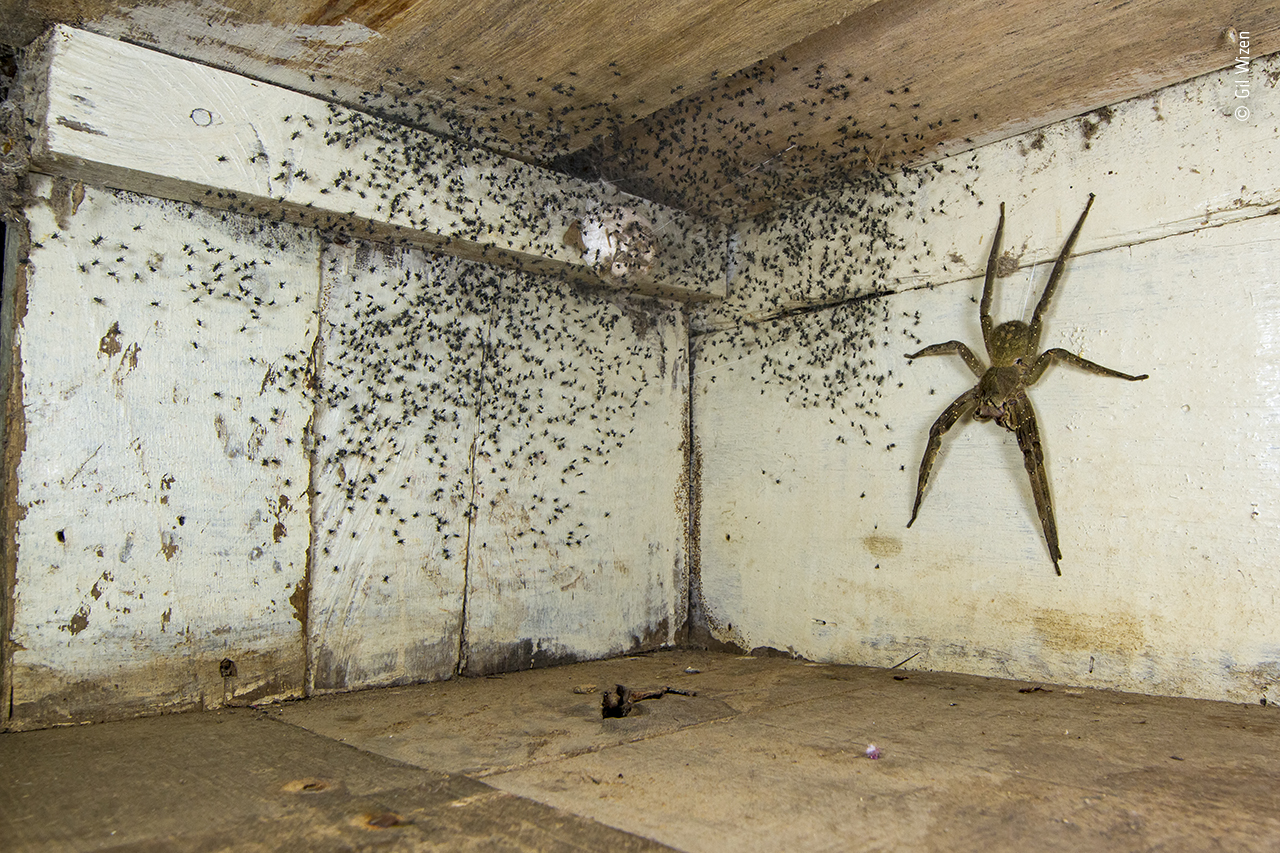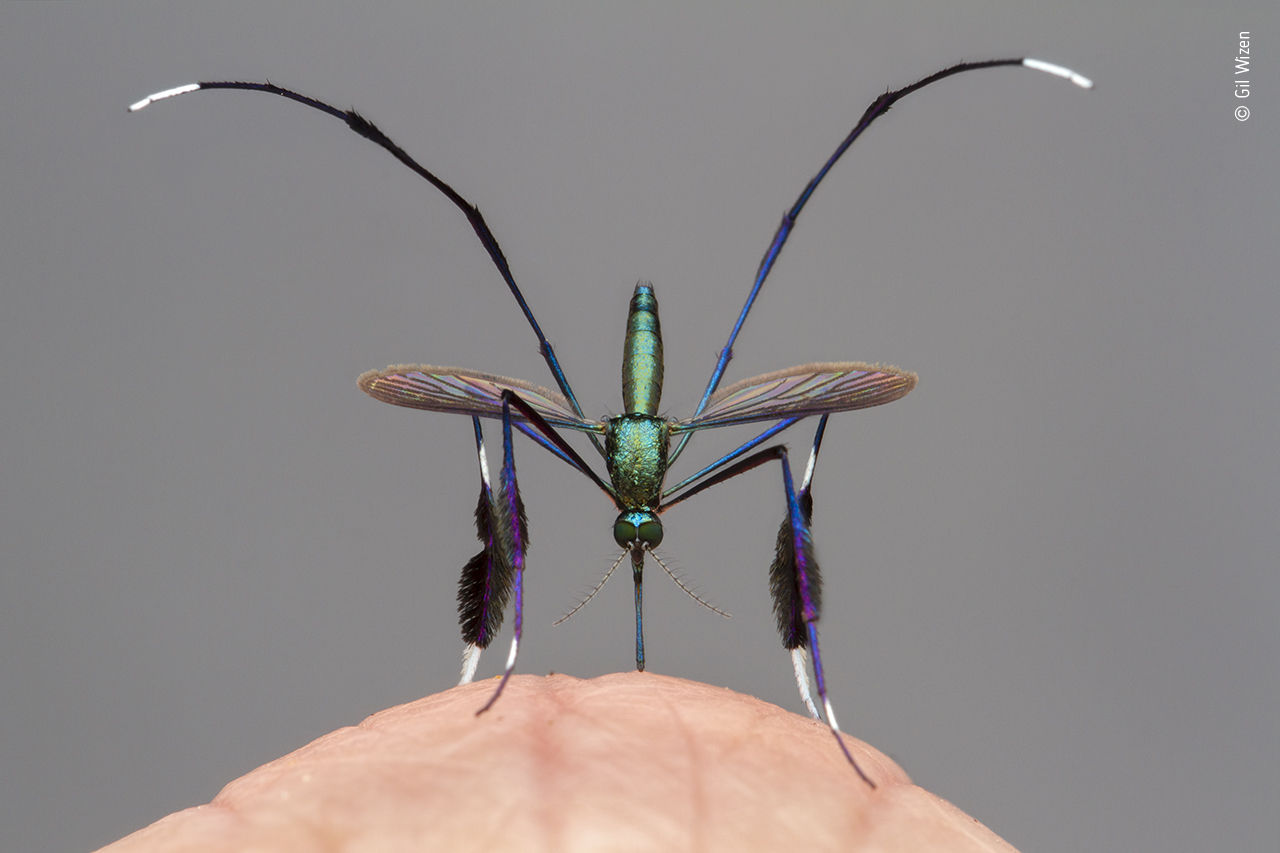Make a donation
The Museum is a charity and we rely on your support.
Make a donation today and support our 350 scientists who are working to build resilient habitats, protect vulnerable species and secure a sustainable future for our planet.

After noticing tiny spiders all over his bedroom, Gil looked under his bed. There, guarding its brood, was one of the world’s most venomous spiders. Before safely relocating it outdoors, he photographed the human-hand-sized Brazilian wandering spider using forced perspective to make it appear even larger.
Brazilian wandering spiders roam forest floors at night in search of prey such as frogs and cockroaches. Their toxic venom can be deadly to mammals including humans, but it also has medicinal uses.
Watch photographer Gil Wizen explore the importance of this image and the lengths he went to take it.

Israel / Canada
Gil is a naturalist and photographer with a love for small creatures. He has an MSc in zoology and entomology, specialising in animal behaviour, and aims to dispel concerns and misconceptions around arthropods. He is also a science communicator involved in educational programmes and displays using live arthropods. His work has been featured in many magazines, books, newspapers and broadcast media.
Help us harness the power of photography to advance scientific knowledge, spread awareness of important issues and nurture a global love for nature.


